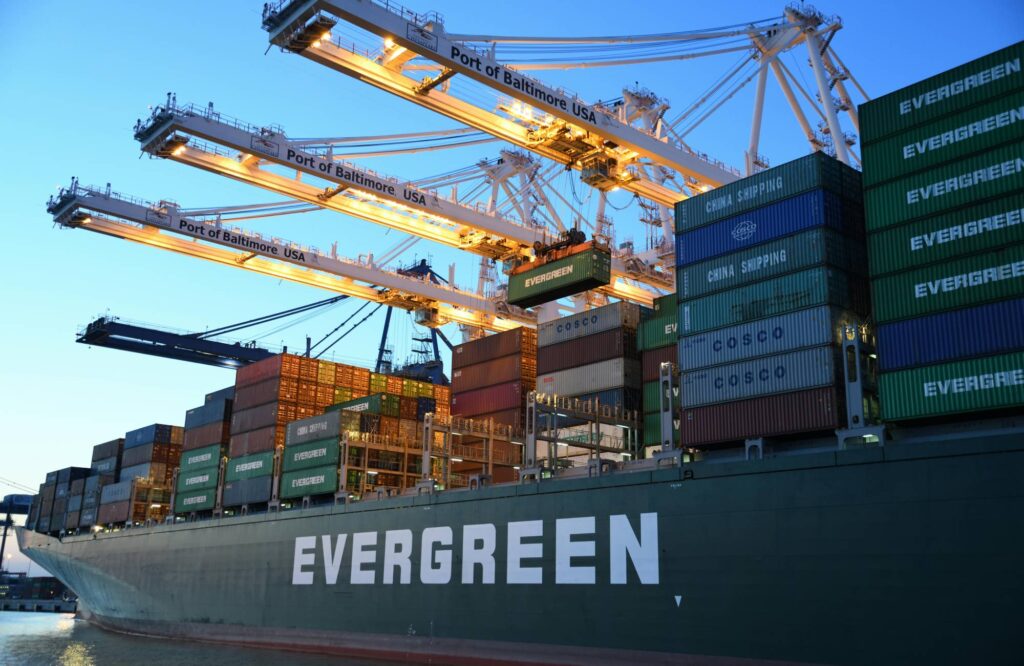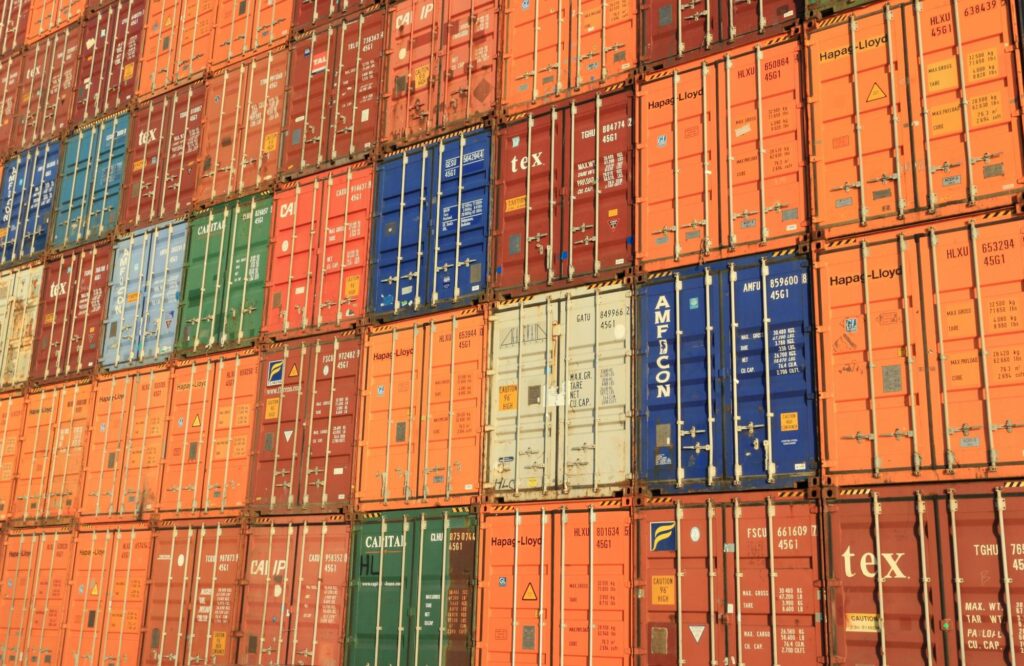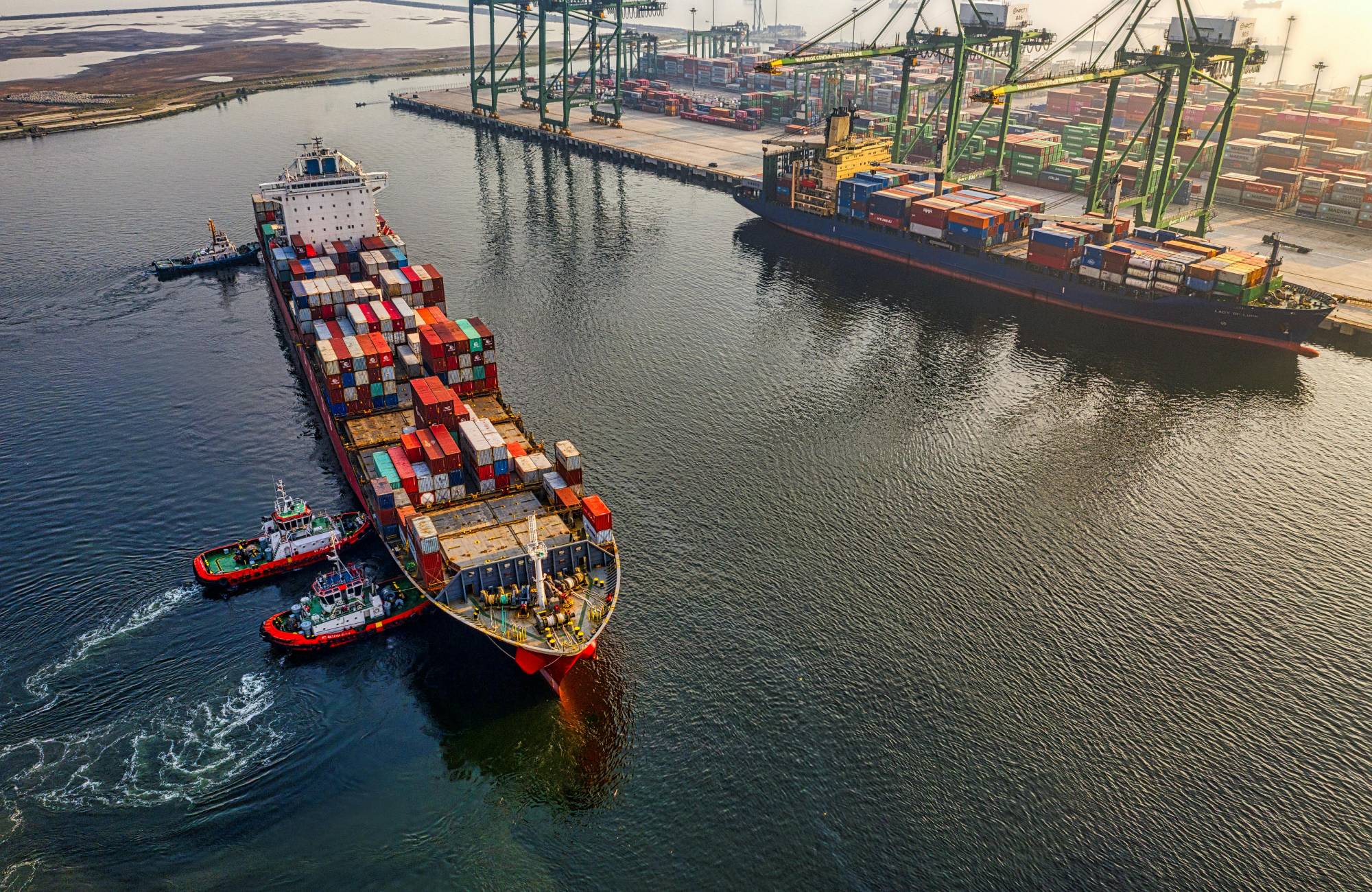For businesses preparing to move goods through ports, rail yards, or distribution hubs for the first time, the question often comes up: what is drayage in shipping, and what should we know before using it?
Whether you’re expanding into import/export, shifting to containerized freight, or exploring third-party logistics support, drayage plays a crucial role in connecting long-haul transport to local delivery. Yet for those new to the process, it’s easy to overlook the planning, costs, and provider differences that can make or break delivery timelines. Making informed drayage decisions early on helps avoid delays, hidden fees, and disruptions in your supply chain.
Here are five things New York businesses should know before using drayage services.
Table of Contents
Key Takeaways
✔ Drayage refers to the short-distance transport of cargo between ports, rail yards, and warehouses.
✔ Choosing the right type of drayage service depends on cargo needs and transit points.
✔ Poor drayage planning can lead to costly delays and demurrage fees.
✔ Bundling drayage with 3PL services improves coordination and supply chain efficiency.
✔ Accurate freight quotes should include chassis fees, fuel surcharges, and wait times.
✔ Local providers offer flexibility, while national carriers bring broader coverage.
✔ Understanding the full drayage meaning in shipping helps businesses avoid unexpected costs and disruptions.
What is Drayage in Shipping?
Drayage is the short-distance transport of shipping containers, usually moving cargo between ports, rail yards, and nearby warehouses or distribution centers. It may only span a few miles, but this handoff is essential to keeping goods flowing smoothly through the supply chain.
Delays in drayage can trigger ripple effects—missed delivery windows, storage fees, and frustrated customers. That’s why businesses, no matter their size, need to understand where drayage fits in their logistics process.
Here’s what that might look like:
✔ A small business importing products from overseas may assume their goods will go straight from the port to their warehouse. But without drayage arranged, the container could sit idle at the terminal, racking up demurrage charges.
✔ A mid-size distributor managing multiple shipments weekly needs tight coordination between port arrivals and warehouse schedules. Drayage ensures containers are moved efficiently to avoid stock delays or backups at the dock.
✔ A large retailer using rail and ocean freight across multiple regions depends on drayage providers to handle time-sensitive transfers and link different transportation modes.

5 Things Businesses Should Know When Evaluating Drayage Services
1. Drayage Is More Than Just Moving a Container
Businesses entering container shipping often assume drayage is just a basic truck transfer from the port to a nearby warehouse. In reality, what is drayage in shipping goes far beyond that—it’s a specialized step in the supply chain that requires coordination, regulatory compliance, and precise timing. Understanding how it actually works helps businesses avoid costly missteps, delays, and storage fees while ensuring smoother, more efficient cargo movement from the start.
How Drayage Impacts the Supply Chain at Every Step
- Planning Reduces Port Congestion: Drayage providers often coordinate with port operators to avoid peak congestion periods. This minimizes idle time and ensures cargo moves quickly from the dock to the destination.
- Timely Transfers Protect Freight Integrity: Containers stuck at terminals can face weather damage, increased storage fees, or spoilage if the cargo is perishable. Drayage ensures goods are transferred fast enough to prevent those risks.
- Customs and Compliance Are Built Into the Process: Many drayage carriers understand the local regulations and can help streamline customs clearance when containers move between jurisdictions. This service goes beyond basic hauling—it’s part of what defines the shipping drayage definition today.
2. Drayage Types Vary Based on Cargo and Route
Not all drayage services are created equal. Different shipments and transit points call for specific types of support. Knowing what’s available helps businesses select the right drayage services that shipping depends on.
Why Choosing the Right Drayage Type Matters
- Intermodal Drayage Connects Shipping Modes: Intermodal drayage handles container transfers between trucks, trains, and ships. It’s vital for companies using rail or ocean freight, as it bridges the gap between carriers without delays.
- Pier Drayage Supports Port-to-Warehouse Transfers: Pier drayage moves containers directly from seaports to nearby storage or distribution centers. It’s especially useful for businesses receiving overseas shipments that need same-day movement from the port.
- Expedited Drayage Handles Urgent Freight: Some freight needs to move immediately to avoid penalties or production stoppages. Expedited services ensure time-sensitive cargo bypasses routine queues and stays on schedule, reflecting the evolving drayage meaning in shipping today.
3. Drayage Affects Delivery Timelines and Costs
Shipping delays aren’t always caused by long-haul issues—short moves can be just as disruptive. If drayage isn’t efficient, containers may sit idle, racking up storage fees and missing delivery deadlines. That’s why understanding the shipping drayage definition includes cost management and schedule control.
How Drayage Can Save or Cost a Business
- Delays Lead to Demurrage Charges: Ports charge demurrage fees when containers sit too long after unloading. Efficient drayage prevents these charges by moving freight out of the terminal on time.
- Last-Mile Distribution Depends on Drayage Timing: If containers don’t leave the port promptly, distribution centers can’t receive or fulfill orders. This puts a strain on inventory levels and customer delivery expectations.
- Transparent Pricing Helps Forecast Budgets: Reputable drayage providers offer clear pricing structures, allowing businesses to plan logistics expenses accurately. Without clarity, hidden costs can skew margins and disrupt supply chain forecasts—even when using basic drayage services shipping.
4. Drayage Requires Tech-Enabled Coordination
Modern drayage isn’t just about trucks—it relies on digital tools to stay efficient. Technology makes it easier to track containers, adjust to delays, and communicate across stakeholders. That’s why the drayage meaning in shipping now includes the role of smart logistics.
How Technology Improves Drayage Operations
- Real-Time Tracking Boosts Visibility: GPS-enabled tracking gives businesses up-to-the-minute updates on container locations, helping logistics teams make fast decisions and avoid miscommunications with vendors or customers—a crucial advantage, as miscommunication is frequently identified as a leading cause of project failures.
- Digital Scheduling Prevents Bottlenecks: Many providers use scheduling software to plan pickups and deliveries based on real-time port or rail yard conditions. This cuts down on wait times and keeps shipments flowing smoothly.
- Integrated Systems Align with Broader Supply Chains: When drayage systems connect to warehouse management or inventory platforms, businesses can coordinate inbound and outbound flows better. This synergy reflects a broader shipping drayage definition that includes tech-driven performance.
5. Not All Drayage Providers Offer the Same Value
While many companies offer drayage, the quality of service varies widely. From equipment condition to customer service, the wrong partner can lead to lost time and higher costs. That’s why selecting the right drayage services shipping provider is a strategic decision.
How to Spot a Reliable Drayage Partner
- Experienced Teams Know the Terrain: A seasoned drayage carrier understands local routes, terminal layouts, and port operations. This knowledge allows for smoother pickups, fewer detours, and faster container handling.
- Scalable Fleets Handle Volume Fluctuations: Businesses with seasonal or high-volume needs should choose a provider with enough trucks and chassis to scale up quickly. A flexible fleet reduces the risk of missed pickups or overflow delays.
- Customer Support Makes a Difference: Communication is key, especially when issues arise. A provider that offers proactive updates, accessible support, and clear escalation paths brings more value than cost alone—a core part of the drayage meaning in shipping for modern logistics teams.
Integrating Drayage with Third-Party Logistics (3PL) Services
For many businesses, drayage is just one piece of a larger logistics puzzle. Partnering with a third-party logistics (3PL) provider can streamline operations by bundling services like transportation, warehousing, and order fulfillment. When done right, this integration improves supply chain visibility and gives companies greater control over costs and delivery timelines.
Container drayage companies in New York City play a key role in this process—connecting ports, rail, and trucks for efficient cargo movement—and accounting for 25% to 40% of total shipping expenses.
1. Drayage as the First Link in a Larger Distribution Plan
3PL providers often use drayage to connect imports from ports to their distribution centers. This short-haul transport sets the pace for everything that follows, from sorting to final-mile delivery. Understanding the drayage meaning in shipping helps companies treat it as a strategic first step rather than a basic handoff.
2. Consolidating Inbound Freight with Drayage and Warehousing
When a 3PL handles both drayage and storage, cargo can be moved directly into warehousing without delays. This eliminates the need to coordinate separate vendors and cuts back on miscommunication. For businesses managing multiple containers per week, integrated drayage services shipping simplifies inbound flow and reduces dwell time at ports.
3. Using Shared Data Systems for Real-Time Visibility
3PLs that offer digital platforms can track containers from the port through to final delivery. Businesses benefit from real-time updates, fewer check-in calls, and faster issue resolution. These platforms also clarify the shipping drayage definition by tying short-distance hauls directly into wider supply chain tracking.
4. Reducing Costs with Bundled Freight and Drayage Solutions
Bundling drayage with broader 3PL services often results in better pricing and fewer invoice surprises. Instead of managing standalone vendors with different billing formats, companies receive consolidated logistics support. This gives businesses a more accurate picture of total costs tied to the drayage meaning in shipping.
5. Streamlining Customs and Documentation Through a 3PL
Many 3PLs help businesses manage customs clearance, especially when containers are routed through multiple regions. By coordinating drayage with paperwork processing, 3PLs reduce the risk of shipment holds or added fees. This service extends beyond typical drayage services shipping and adds value through compliance support.
6. Adapting Quickly to Port or Carrier Disruptions
When labor strikes, congestion, or weather impact port operations, 3PLs can reroute containers or shift delivery timelines. Integrated drayage makes these pivots easier by relying on internal fleets and pre-vetted drivers. It’s in these high-pressure moments that a strong 3PL relationship redefines the practical shipping drayage definition.

Budgeting for Drayage in a Freight Quote
Drayage might cover only a few miles, but it can carry a surprising impact on a shipping budget. Many companies underestimate its cost because it’s not always broken out clearly in freight quotes. A clear understanding of what is drayage in shipping helps uncover the real components behind the drayage meaning in shipping, allowing businesses to avoid unexpected charges and better control overall logistics spending.1. Understanding Base Drayage Rates by Region and Port
Base rates for drayage vary depending on the port, terminal congestion, and local labor conditions. A container moved 10 miles in Los Angeles might cost more than the same distance in Savannah due to fees, chassis shortages, or regulations. Recognizing this variation is essential to applying the correct shipping drayage definition in rate forecasting.2. Accounting for Chassis Rental and Usage Fees
Chassis—the wheeled frames used to haul containers—are not always included in the base rate. Many drayage carriers charge daily or per-use fees, especially in high-demand regions. These charges are a critical part of drayage services shipping and should be itemized in quotes to avoid billing disputes later.3. Considering Wait Time and Dwell Charges at Terminals
If a truck waits too long at a port or rail yard, additional fees are billed for the time lost. Standard free wait time might range from 60 to 90 minutes, but after that, hourly rates apply. These charges quickly add up and are part of the true drayage meaning in shipping that many quotes overlook.4. Including Accessorial Fees and Fuel Surcharges
Drayage quotes often include fuel surcharges, port access fees, and charges for extra stops or lift-gate services. While each cost may seem minor, together they can significantly increase the total. A transparent quote should reflect all of these to align with the full shipping drayage definition in practice.5. Factoring in Detention and Demurrage Risks
If containers are not picked up or returned within the allowed time, ports and railroads charge demurrage or detention fees. These costs are separate from drayage but directly tied to its timing and coordination. Companies that understand drayage services shipping also plan for these potential overages in their logistics budgets.6. Building Contingency Buffers into Logistics Spend
Even the most well-planned drayage move can face unexpected delays—weather, equipment issues, or labor shortages. Adding a buffer to the drayage portion of a freight quote helps companies stay financially prepared. This approach reflects a more realistic drayage meaning in shipping, especially in dynamic supply chain environments.How to Choose Between Local and National Drayage Providers
When it comes to drayage, businesses can work with either local operators or large national providers. The right choice depends on factors like shipment frequency, delivery area, and service expectations. Knowing the strengths and trade-offs of each option helps businesses make smarter decisions based on their needs.1. Local Providers Know the Territory and Terminal Rules
Local drayage carriers often have deep knowledge of port layouts, regional traffic patterns, and terminal procedures. This familiarity can lead to faster pickups, fewer mistakes, and better scheduling flexibility. For businesses that rely on precision, this expertise often delivers more value than scale alone in drayage services shipping.2. National Carriers Offer Scalable Capacity Across Regions
Larger drayage providers have broader fleets and the ability to manage multiple ports or rail hubs at once. This is ideal for businesses that ship to or from several locations across the country. In these cases, the shipping drayage definition expands to include network coverage and consistent service standards.3. Technology Integration Often Differs by Provider Size
National providers are more likely to use advanced digital platforms for booking, tracking, and invoicing. While some local companies offer these tools too, it’s less common and sometimes less robust. Businesses that prioritize real-time updates and data sharing should consider how tech aligns with their drayage services shipping goals.4. Customer Service and Flexibility May Be Better Locally
Smaller, regional carriers often provide more direct communication and faster problem-solving. There’s less red tape, and clients can speak to dispatchers or managers without delay. That personal touch can be a major advantage for companies still learning the ins and outs of the drayage meaning in shipping.5. Cost Structures Can Vary Dramatically
National providers may offer bundled pricing or volume discounts that benefit large-scale shippers. However, local carriers might be more cost-effective for occasional or short-haul needs. Comparing quotes side-by-side is key to understanding the real cost behind drayage services shipping, including hidden accessorial fees.6. Response Times During Disruptions Matter
When port slowdowns, weather events, or labor issues strike, provider response time becomes critical. National carriers might reroute through alternate ports or tap backup fleets, while local companies may lean on flexibility and relationships. Either way, this responsiveness shapes the operational value of shipping drayage definition during high-stress situations.Frequently Asked Questions (FAQs)
What types of containers are commonly used in drayage?
Drayage typically involves standard 20-foot and 40-foot intermodal containers used for international or domestic cargo. Some carriers also handle specialty containers like refrigerated (reefer) units or open-top containers, depending on the shipment type. Regardless of the container, the drayage meaning in shipping includes the safe and timely transfer of these units between ports, rail yards, and warehouses.
Is drayage only used in international shipping?
No, drayage is used in both domestic and international shipping. While it often supports containerized imports or exports through seaports, it’s also essential for moving freight between rail terminals or across short distances within inland logistics hubs. The shipping drayage definition covers any short-haul container movement, no matter the shipment’s origin.
Can hazardous materials be moved via drayage?
Yes, but only by drayage carriers certified and equipped to handle hazardous materials (hazmat). These shipments require special permits, labeling, and safety procedures to comply with local and federal regulations. Businesses must ensure that drayage services shipping these types of goods meet all compliance standards.
How does peak season impact drayage availability?
During peak seasons—such as holidays or agricultural harvests—drayage capacity tightens, leading to longer wait times and increased rates. Ports and terminals often experience congestion, and available drivers or chassis become limited. Planning ahead becomes critical during these times to secure reliable drayage services shipping.
Do drayage carriers offer cross-docking services?
Some drayage providers also offer cross-docking, which involves unloading freight from one container and loading it directly onto another for continued transport. This is useful for companies aiming to minimize storage time or consolidate shipments. When cross-docking is available, the drayage meaning in shipping expands beyond transport into value-added logistics support.
Start Your First Container Move with Confidence
Drayage Company By Best helps NYC-area businesses navigate their first container shipments with clarity, reliability, and expert support. From ports and rail yards to warehouses and distribution hubs, we make short-haul transport simple, efficient, and stress-free. If you’re new to drayage and need a partner who can guide you through the process, our team is here to help.
Reach out for a consultation—let’s plan your next move

